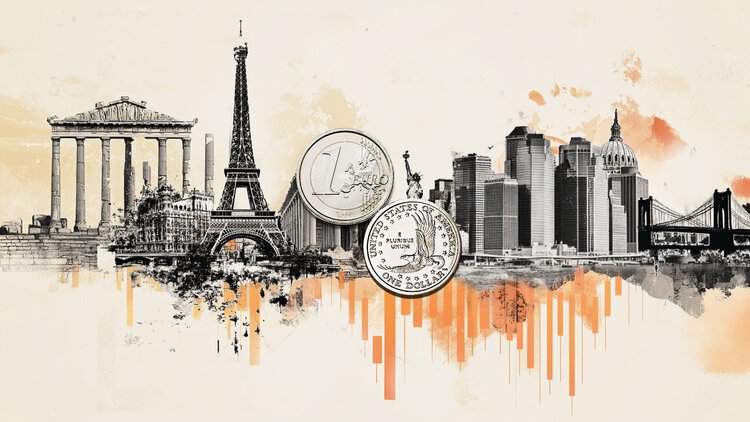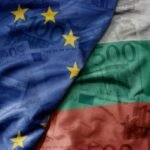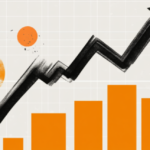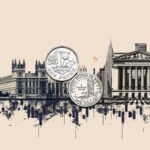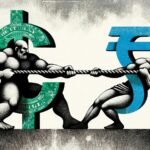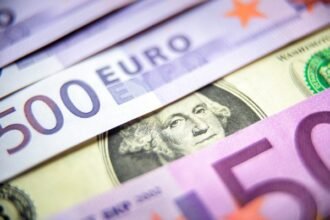EUR/USD touched its highest level in over a week above 1.1670 early Thursday before retreating to the 1.1650 area. The pair’s technical outlook suggests that the bullish bias remains intact but technical buyers could turn hesitant unless EUR/USD confirms 1.1650 as support.
Euro Price This week
The table below shows the percentage change of Euro (EUR) against listed major currencies this week. Euro was the strongest against the Canadian Dollar.
| USD | EUR | GBP | JPY | CAD | AUD | NZD | CHF | |
|---|---|---|---|---|---|---|---|---|
| USD | -0.33% | -0.63% | -0.54% | 0.30% | -0.00% | 0.03% | -0.58% | |
| EUR | 0.33% | -0.30% | -0.18% | 0.62% | 0.41% | 0.36% | -0.30% | |
| GBP | 0.63% | 0.30% | 0.18% | 0.93% | 0.71% | 0.66% | 0.02% | |
| JPY | 0.54% | 0.18% | -0.18% | 0.78% | 0.49% | 0.60% | -0.09% | |
| CAD | -0.30% | -0.62% | -0.93% | -0.78% | -0.33% | -0.25% | -0.90% | |
| AUD | 0.00% | -0.41% | -0.71% | -0.49% | 0.33% | -0.04% | -0.68% | |
| NZD | -0.03% | -0.36% | -0.66% | -0.60% | 0.25% | 0.04% | -0.64% | |
| CHF | 0.58% | 0.30% | -0.02% | 0.09% | 0.90% | 0.68% | 0.64% |
The heat map shows percentage changes of major currencies against each other. The base currency is picked from the left column, while the quote currency is picked from the top row. For example, if you pick the Euro from the left column and move along the horizontal line to the US Dollar, the percentage change displayed in the box will represent EUR (base)/USD (quote).
The selling pressure surrounding the US Dollar (USD) on Wednesday helped EUR/USD build on Tuesday’s gains.
In the absence of high-impact data releases, the uncertainty surrounding the US-China trade relations didn’t allow the USD to find demand midweek. US Treasury Secretary Scott Bessent said that they don’t want to decouple from China but noted that China was trying to erect new trade barriers. “The US has lots of levers that it can pull on China trade,” he added.
Early Thursday, US stock index futures rise between 0.25% and 0.5% on the day. In case Wall Street’s main indexes open higher and gather bullish momentum, risk flows could dominate the action in financial markets and make it difficult for the USD to stage a rebound.
During the American trading hours, European Central Bank (ECB) President Christine Lagarde will participate in the International Monetary Fund’s (IMF) debate on ‘Global Economy: Shaping Economic Policies in the Face of Disruptive Change.’ Additionally, Federal Reserve Governors Christopher Waller and Michelle Bowman will be delivering speeches later in the day.
According to the CME FedWatch Tool, markets are currently nearly fully pricing in two more 25 basis-points Fed rate cuts this year. Hence, the market reaction to the Fed commentary is likely to be muted unless policymakers voice their opposition against a rate cut in December.
EUR/USD Technical Analysis

The Relative Strength Index (RSI) indicator on the 4-hour chart holds slightly above 60, suggesting that the bullish bias remains unchanged in the short term. However, EUR/USD seems to be struggling to pull away from the 100-day Simple Moving Average (SMA), currently located at 1.1650.
In case EUR/USD confirms 1.1650 as support, technical buyers could remain interested. In this scenario, 1.1700 (Fibonacci 38.2% retracement of the latest uptrend, 200-period SMA) could be seen as the next resistance level before 1.1765 (Fibonacci 23.6% retracement).
On the other hand, buyers could hesitate if the pair fails to stabilize above 1.1650. Looking south, support levels could be spotted at 1.1580 (Fibonacci 61.8% retracement) and 1.1550 (static level).
Euro FAQs
The Euro is the currency for the 19 European Union countries that belong to the Eurozone. It is the second most heavily traded currency in the world behind the US Dollar. In 2022, it accounted for 31% of all foreign exchange transactions, with an average daily turnover of over $2.2 trillion a day.
EUR/USD is the most heavily traded currency pair in the world, accounting for an estimated 30% off all transactions, followed by EUR/JPY (4%), EUR/GBP (3%) and EUR/AUD (2%).
The European Central Bank (ECB) in Frankfurt, Germany, is the reserve bank for the Eurozone. The ECB sets interest rates and manages monetary policy.
The ECB’s primary mandate is to maintain price stability, which means either controlling inflation or stimulating growth. Its primary tool is the raising or lowering of interest rates. Relatively high interest rates – or the expectation of higher rates – will usually benefit the Euro and vice versa.
The ECB Governing Council makes monetary policy decisions at meetings held eight times a year. Decisions are made by heads of the Eurozone national banks and six permanent members, including the President of the ECB, Christine Lagarde.
Eurozone inflation data, measured by the Harmonized Index of Consumer Prices (HICP), is an important econometric for the Euro. If inflation rises more than expected, especially if above the ECB’s 2% target, it obliges the ECB to raise interest rates to bring it back under control.
Relatively high interest rates compared to its counterparts will usually benefit the Euro, as it makes the region more attractive as a place for global investors to park their money.
Data releases gauge the health of the economy and can impact on the Euro. Indicators such as GDP, Manufacturing and Services PMIs, employment, and consumer sentiment surveys can all influence the direction of the single currency.
A strong economy is good for the Euro. Not only does it attract more foreign investment but it may encourage the ECB to put up interest rates, which will directly strengthen the Euro. Otherwise, if economic data is weak, the Euro is likely to fall.
Economic data for the four largest economies in the euro area (Germany, France, Italy and Spain) are especially significant, as they account for 75% of the Eurozone’s economy.
Another significant data release for the Euro is the Trade Balance. This indicator measures the difference between what a country earns from its exports and what it spends on imports over a given period.
If a country produces highly sought after exports then its currency will gain in value purely from the extra demand created from foreign buyers seeking to purchase these goods. Therefore, a positive net Trade Balance strengthens a currency and vice versa for a negative balance.

